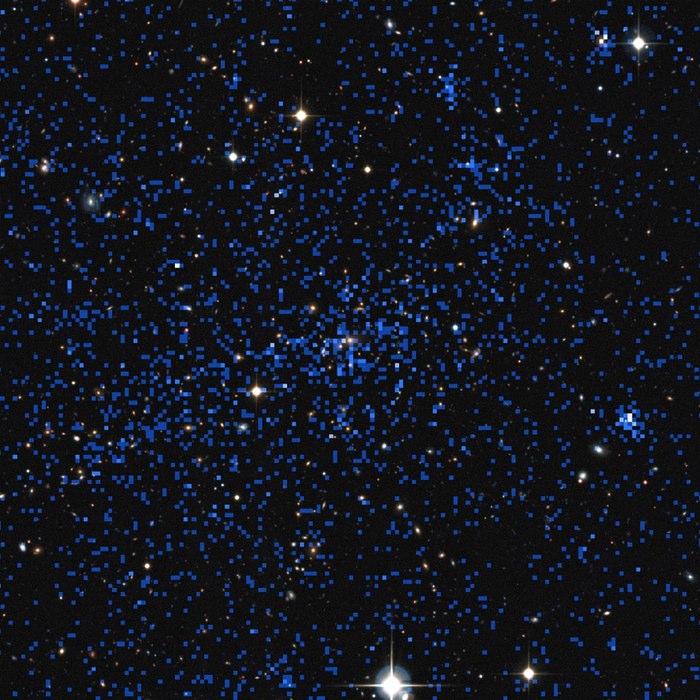An international team of astronomers has used multiple telescopes to study two large patches of sky, searching for the X-ray emissions from distant galaxy clusters. It's hoped that the work will provide insights into the nature of dark matter and dark energy.
The XXL survey, which is one of the largest ever of its kind, focuses on the most massive gravitationally bound structures in the Universe – galaxy clusters. These massive objects house reservoirs of gas with temperatures so high that they emit X-rays that can be observed by telescopes orbiting Earth. Gaining a better understanding of these clusters is important, as it's believed that they are influenced by the most elusive components of the Universe – dark matter and dark energy.
The new survey was conducted by an international team of more than 100 astronomers, searching two patches of sky, each around 100 times the size of the moon. The study is making use of X-ray observations from the ESA's XMM-Newton orbiting space telescope alongside ground-based data from installations such as the ESO's Very Large Telescope (VLT) and New Technology Telescope (NTT), coming together to form a huge collection of data across the electromagnetic spectrum.
The XMM-Newton telescope was used to identify the clusters, while the NTT and VLT focused on working out exactly how far away each object is. This two-fold method allowed the astronomers to build a three dimensional view of the clusters, which in turns allows for the precise measurement and analysis of dark matter and dark energy.
At present, only one fifth of the total expected data has been processed, but several interesting discoveries have already been made. These include the identification of five new groups of galaxy clusters – each referred to as a supercluster – and evidence to support the notion that the observed galaxy clusters are scaled down versions of those seen in the modern Universe.
The findings also confirmed that there are a lower number of clusters present in the early Universe than suggested by predictive models based on observations by ESA's Planck telescope. While the reason for this is currently unknown, the XXL survey team believes that the mystery will be solved once the full sample data is available, which is expected in 2017.
Source: ESO

